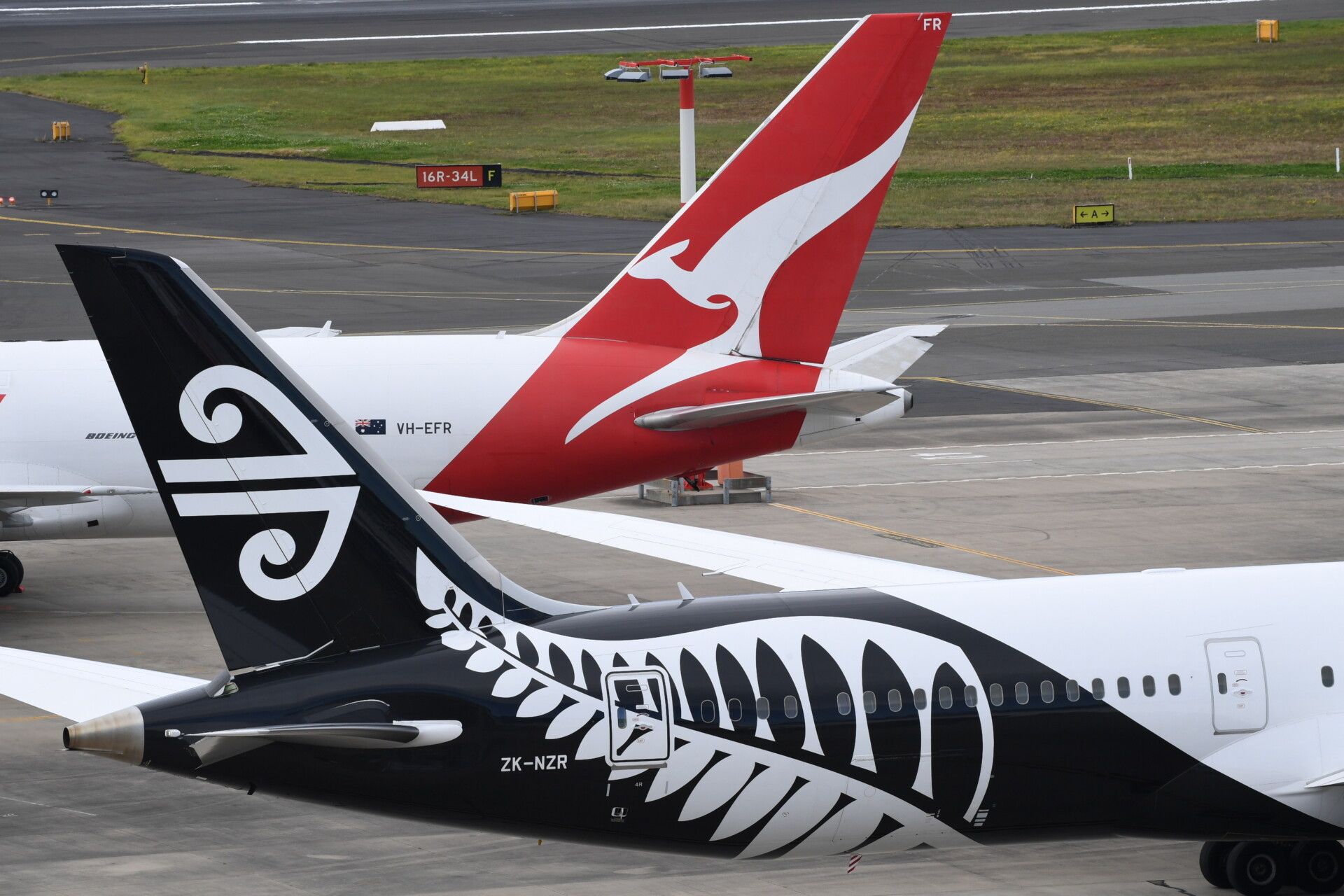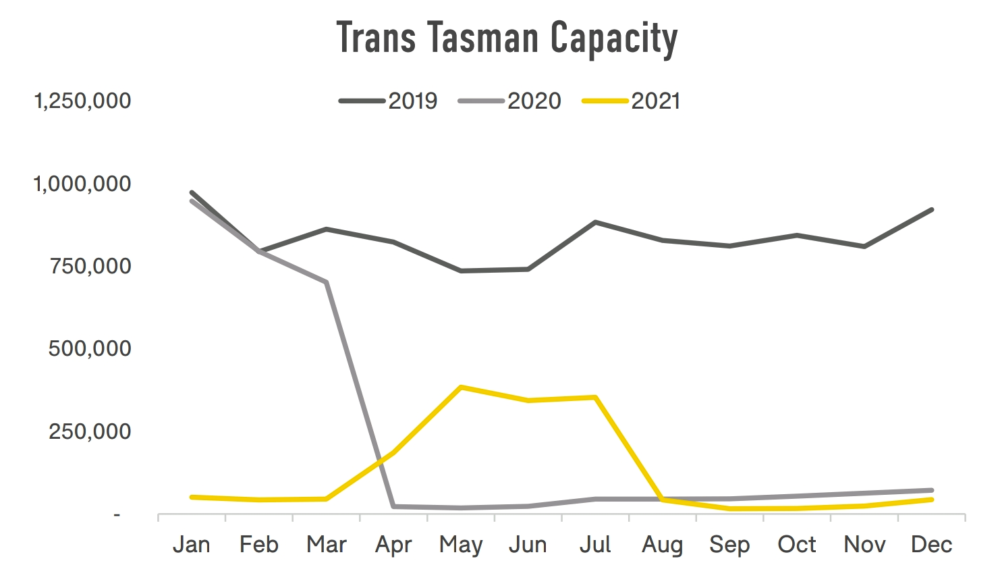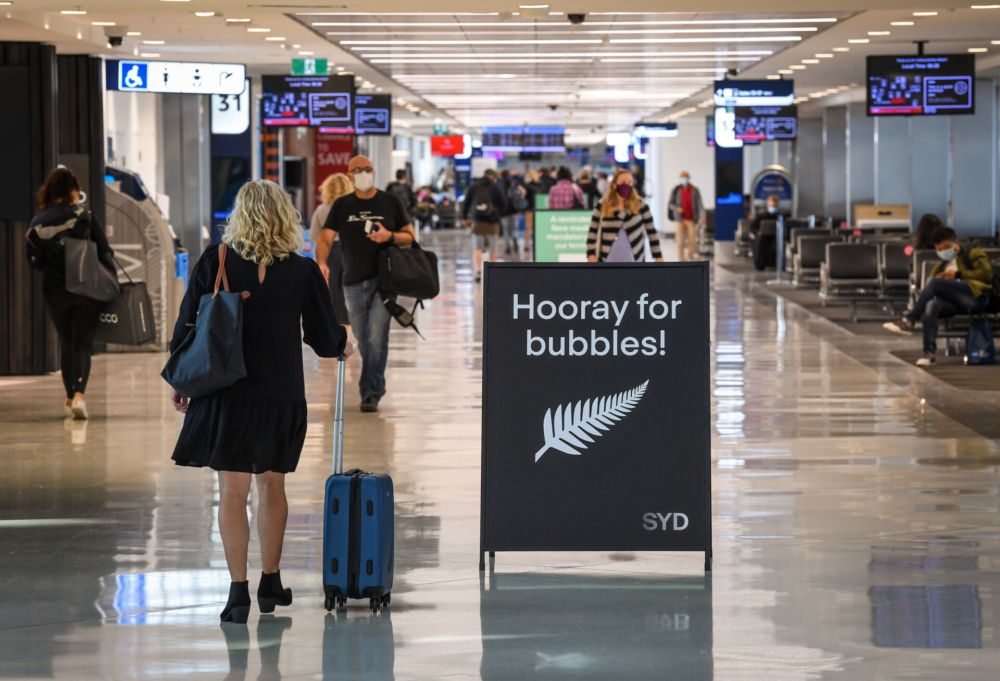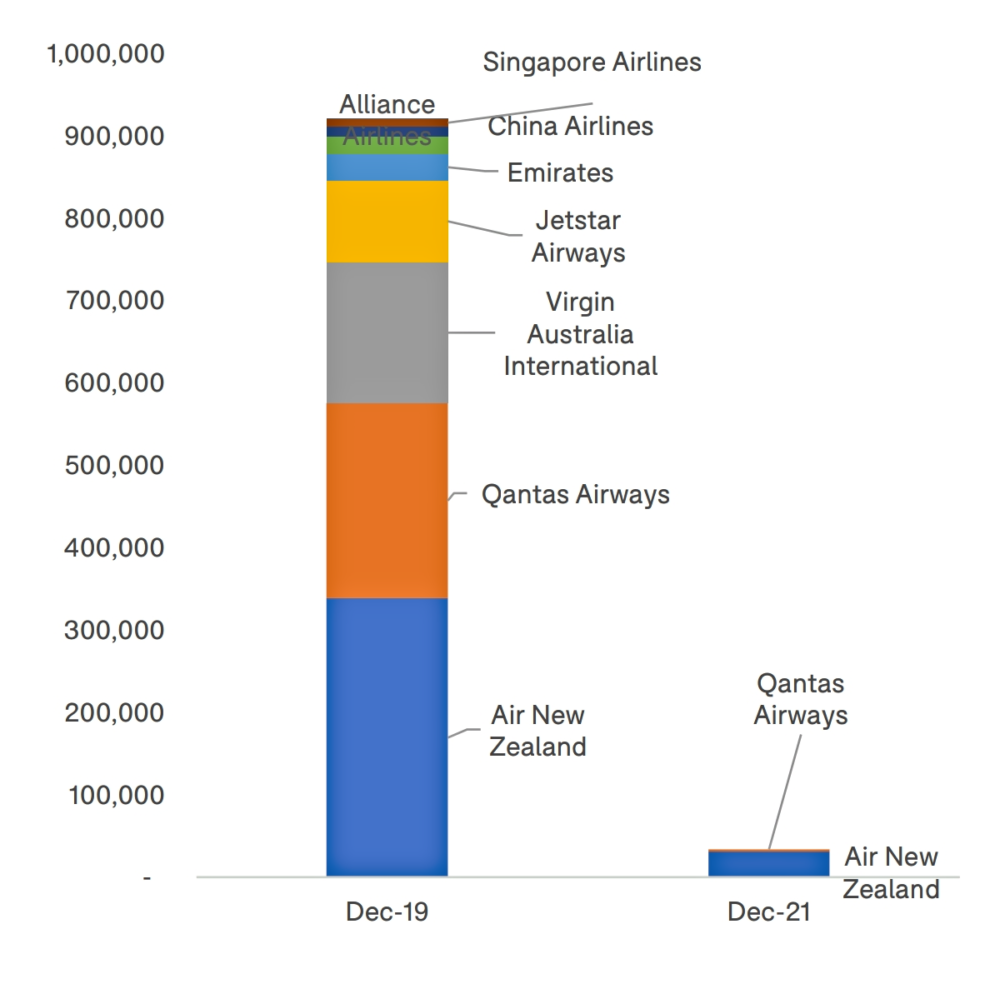International airline travel in the Southwest Pacific region, particularly international airline travel in the key Australia - New Zealand market, continues to lag nearly all industry recovery trajectories elsewhere in the world. While it is anticipated capacity in the Southwest Pacific will double between now and March 2022, trans-Tasman travel will not be contributing much to that increase.
All's quiet on the trans-Tasman front
More than seven million people fly the Australia - New Zealand country pair in a good year, with both countries normally being each other's biggest inbound market. Until the downturn, multiple airlines were flying the short hop across the Tasman Sea, including Air New Zealand, Qantas, Jetstar, Virgin Australia, Alliance Airlines, Singapore Airlines, Emirates, and China Airlines.
Things are quieter nowadays. While Australia is welcoming in fully vaccinated Kiwis, allowing arrivals at Sydney and Melbourne Airports to bypass quarantine requirements, New Zealand doesn't plan on returning the favor until April 2022. As a result, most airlines have suspended flights, and passengers numbers are way down on pre-downturn levels.
"The interesting thing about trans-Tasman was that it had every sort of product you could imagine," Christchurch Airport's Head of Aero Development, Gordon Bevan, told a recent OAG webinar. "We had everything from row 33, seat E, on Jetstar through to 1A in first class on an Emirates A380. We had every price point and every type of product inventory. Whether we'll get all those planes back on the trans-Tasman market is another question."
The much-hyped travel corridor popped after three months
After 12 months of closed borders, the trans-Tasman market got a short-lived boost earlier this year with a two-way quarantine-free travel corridor. Despite the hoopla, the travel corridor only lasted about three months.
The impact of that travel corridor can be seen in the spike in trans-Tasman demand across May, June, and July of 2021. Gordon Bevan says there was an element of frustrated demand driving that, particularly from travelers keen to see family and friends in either country.
"It's fair to say that all the routes between Australia and New Zealand got to about 30% of pre-COVID levels, and then they tapered off," he adds.
The travel corridor was 12 months in the making and subject to a few false starts, but it was among the first in the world to get up and running.
"The trans-Tasman bubble was obviously very innovative in a global sense and was probably one of the few bubbles in the world that got up and then, significantly, popped," said former airline executive Simon Westaway at the webinar.
"It's been a pretty sad public policy fail between both the Australian and New Zealand Governments. This market should be back up and running, and it's very disappointing."
Westaway says with Australia and New Zealand now having high levels of the adult population fully vaccinated (both countries are at 80% plus), good quarantine and screening arrangements, historically high levels of connectivity, and competitive tension, there is no reason the trans-Tasman market should be back up and operating.
"I think both governments went into this with the right intentions 18 months ago," he says while remaining critical of the current state of trans-Tasman aviation affairs.
I think both sides have been captured... it just got very political; it got too hard to keep prosecuting a reopening. It's an integrated market in which systems and policies have said 'no, we can't be integrated at this point.'"
Singapore Airlines quit the trans-Tasman market - seven carriers remain
Before the travel downturn, multiple carriers competed for business on the trans-Tasman market, including three airlines offering fifth freedom flights. Emirates offered an A380 service flying Sydney - Christchurch - Sydney. China Airlines operated an A350-900 service on the Brisbane - Auckland - Brisbane sector, and Singapore Airlines flew Melbourne - Wellington - Melbourne using Boeing 777 aircraft.
While Singapore Airlines has said it won't resume its fifth freedom flight to Wellington, Emirates plans to resume its Christchurch flights. However, that's unlikely to happen until New Zealand loosens its border restrictions. While unconfirmed, the future of the Brisbane - Auckland - Brisbane China Airlines flights also looks relatively assured.
But Gordon Bevan says travelers shouldn't count on the trans-Tasman market normalizing anytime soon.
"We've taken a very cautious view in New Zealand. We are cautious about the impact on the capabilities of our health service to cope with serious numbers of casualties as a result of COVID," he told the OAG webinar.
"Once that leaky bubble popped back in July, we closed the door. Quarantine-free travel isn't going to happen anytime soon. We can't afford the infrastructure of open doors but putting everybody through isolation and quarantine."
Trans Tasman travel likely to remain subdued for another six months
New Zealand will begin allowing fully vaccinated Kiwis to return home from Australia and head into home isolation rather than quarantine from mid-January. New Zealanders from other countries can start heading home under the same provisos from mid-February. But New Zealand doesn't plan to open to fully vaccinated foreign nationals until April 30, 2022 - and even then, it may be stage reopening.
"We've got schedules loaded from the middle of January. Air New Zealand has got Christchurch to Sydney, Brisbane, and Melbourne. But that is purely to take New Zealanders to Australia, or New Zealanders coming back home from Australia and going into home isolation - it's very much a Kiwi facing market at the moment," says Mr Bevan
"You'll be able to take an Air New Zealand flight to Sydney, Brisbane, or Melbourne. Whether as a tourist, you'll want to go there and come back and do seven days home isolation is another question."
As for Simon Westaway, he seems perplexed about how a usually vibrant aviation market got itself in the current mess and why it will take so long to get out of it.
"I'm at a bit of a loss as to why we're at where we're at, and it looks like it will be mid-year next year before we start to see any capacity growth on the market."




